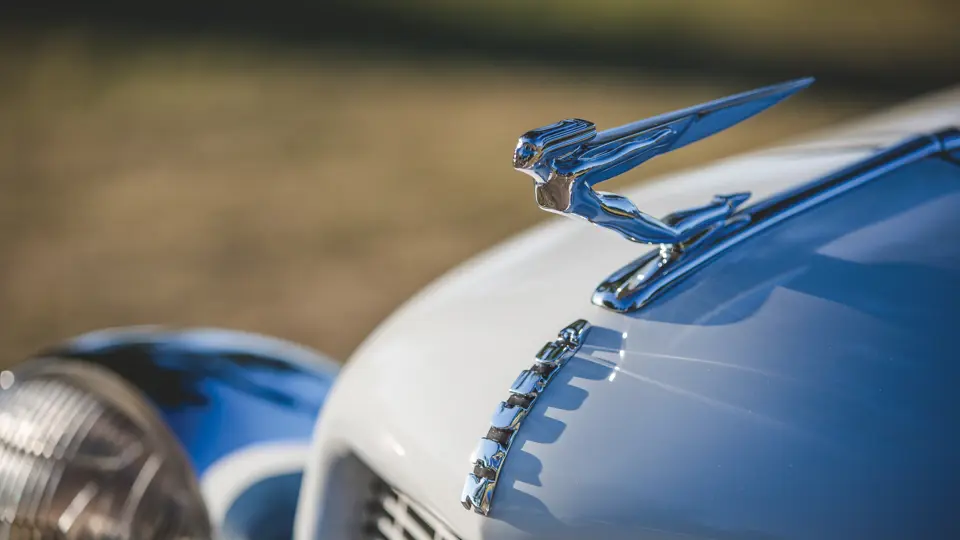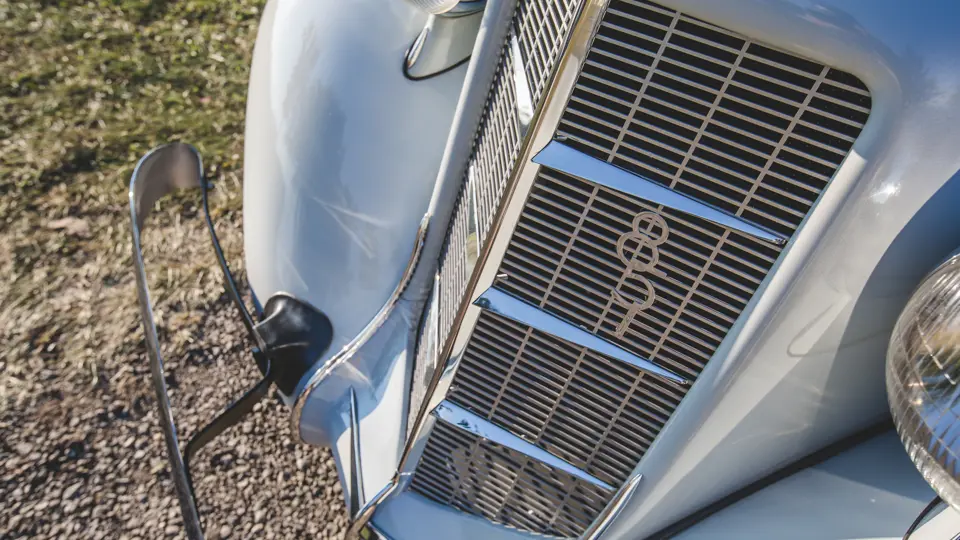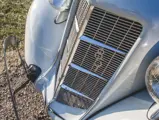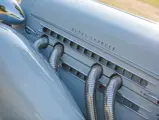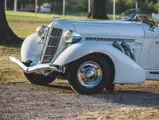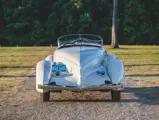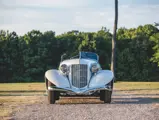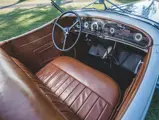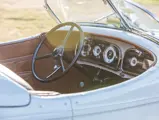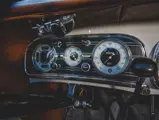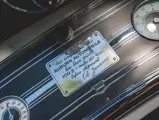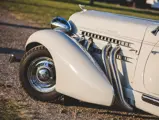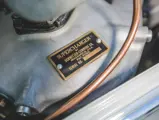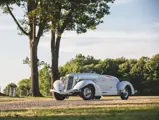
1935 Auburn 851 Supercharged Speedster
{{lr.item.text}}
$880,000 USD | Sold
{{bidding.lot.reserveStatusFormatted}}
- Auburn Cord Duesenberg Club Certified Category One (A-256)
- Amelia Island Concours Best in Class winner
- A two-time 100-point car in 2016 Classic Car Club of America (CCCA) judging
- Exhaustively researched and extremely authentic restoration
- One of the finest Auburn speedsters in the world
Series 851. 150 bhp, 280 cu. in. L-head inline eight-cylinder engine with a single Stromberg carburetor and Schwitzer-Cummins centrifugal supercharger, three-speed manual transmission with a Columbia dual-ratio rear axle, solid front and rear axles with semi-elliptical leaf springs, and four-wheel hydraulic drum brakes. Wheelbase: 127 in.
THE AUBURN SPEEDSTER
In the days when Bugattis crossed France and 4½-Litre Bentleys tore through the British countryside, the American equivalent was the Auburn speedster. Indiana’s Auburn Automobile Company revealed its first version of this dashing body style, inspired by a Duesenberg show car, for the 1928 model year and would offer variations on the theme through to the end of production in 1936.
The 1935–1936 speedsters were designed by the legendary Gordon Buehrig. Audacious by the standards of their time, they featured curvaceous bodywork with a straight hood line shooting back from the radiator to a sharply vee’d windshield, down between pontoon fenders, over gently sloping doors, and descending in a graceful taper to the rear bumper. It was this distinctive rear design, elegantly outlined by chrome and striping, that gave the speedster its everlasting nickname, “the boattail.”
Underneath, the speedster shared the same exciting mechanicals as other supercharged Auburn models. The glistening chrome side exhaust heralded the presence of a Schwitzer-Cummins blower, which boosted the horsepower of the Auburn straight eight to 150 from a normally aspirated reading of 115. The 150 horsepower was sent to a Columbia dual-ratio rear axle, standard equipment on the supercharged models, which provided two ratios for each gear, one low and one high. The ratios could be changed as often as desired, while at very low speeds or at a stop, by moving the switch in the center of the steering wheel. This provided the supercharged Auburn with much greater flexibility, making it a true “driver’s car,” ideal for both purring through crowded cities and roaring down country lanes.
Each speedster bore on its dashboard a plaque inscribed, “This certifies that this AUBURN AUTOMOBILE has been driven 100.8 miles per hour before shipment.” It was signed by David “Ab” Jenkins, the speed record driver who achieved some of his greatest successes at Bonneville behind the wheel of a late Auburn speedster. Of course, the plaques were merely factory decoration installed on the production line. Then again, no one who has driven these cars since has ever complained about a lack of speed!
AN AWARD-WINNING SPEEDSTER
The car offered here, serial number 851 33952 E, is documented by the Auburn Cord Duesenberg Club as being an authentic original speedster, which has received the Club’s vaunted Category One Certification. Furthermore, according to ACD Club historian Stan Gilliland, the car is one of two known that were equipped in-period with a rear-mounted spare, a feature installed on several Auburns and Cords by the West Coast distributor in Los Angeles.
The speedster was brought to Sonora, Mexico, in the late 1930s or early 1940s, and was discovered there in 1962 by Kenneth R. Wilson Jr. of Campbell, California. Mr. Wilson supplied a photograph of the unrestored car to the ACD Club Newsletter the following year, noting that “aside from being in the rough and missing some parts, the car is in every way stock from motor to body.” It was eventually acquired in 1982 by Frank D. Wilson II, no relation, of San Jose, and received its first restoration and was ACD Club Certified while in his ownership. Mr. Wilson retained the restored speedster until his passing in 2006, at which point it was sold to Mike Gartis of San Jose.
The car was acquired several years later by the present owner, a Classic Car Club of America member and enthusiast, who endeavored to have it freshly restored to a modern standard. To do so, he enlisted the best craftsmen he could find. Mechanical work was entrusted to Keith Pershing of Island Automotive in Marco Island, Florida, a vintage car specialist. The cosmetic work – body, interior, and top – was performed by David Copeland, senior restoration technician for the REVS Institute, who refinished it in the elegant shade of dove grey in which it appears today. Mr. Copeland notes that the grey was found on unrestored body wood inside the golf club door, which has been preserved, as he believes that this is the original color for the body from 1935.
In fact, authenticity was the byword for the restoration of this car. The restoration team consulted well-known Auburn speedster expert John Ehresman’s exhaustive records and files, as well as the ACD Automobile Museum’s archives, carefully studying factory photos and records to determine every correct piece of trim and original finish. Only total and complete correctness and authenticity were acceptable, including finishes under the hood and of the undercarriage.
The restored car has enjoyed a highly successful show career. It achieved AACA Junior and Senior First Prizes, and scored a perfect 100 points at the 2016 CCCA Grand Classic at Boca Raton, Florida, followed by another 100 points at the Ohio Region Grand Classic this July. Most prominently and also in 2016, the Auburn was awarded Best in Class at the renowned Amelia Island Concours d’Elegance, out of a class of many fabulous automobiles.
The 1935 and 1936 Auburn speedsters are among the most desirable Full Classics on the market today, but it is rare to find one that has been taken to such a superb level of award-winning, painstakingly researched authenticity as that which is offered here. It is a wonderful car from an excellent home, deserving of taking center stage in any of the world’s great collections.


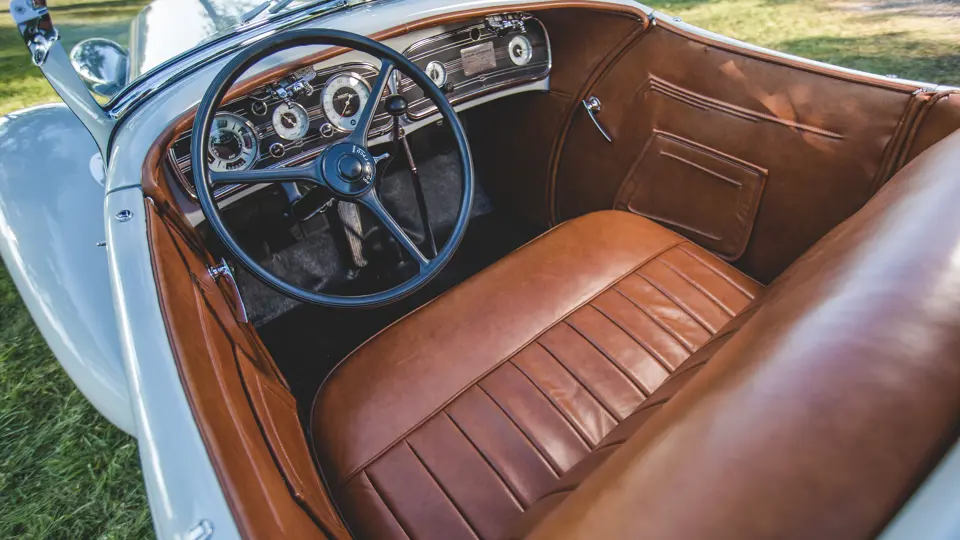




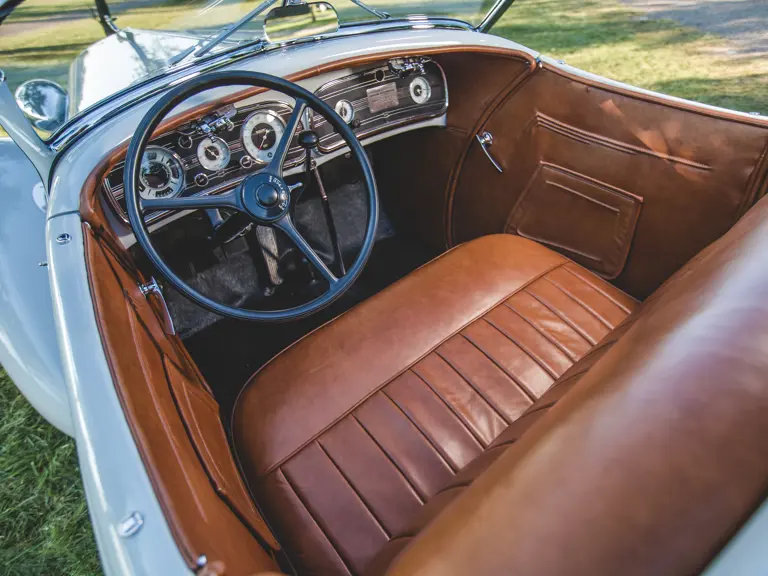


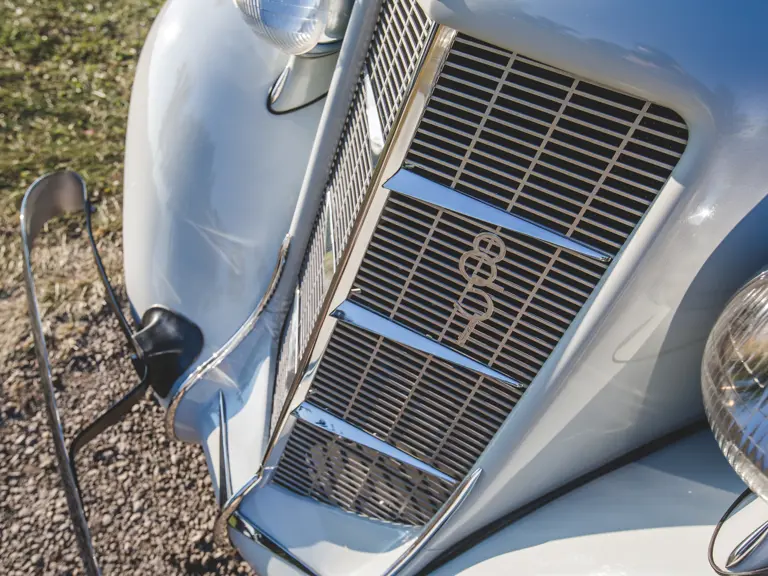

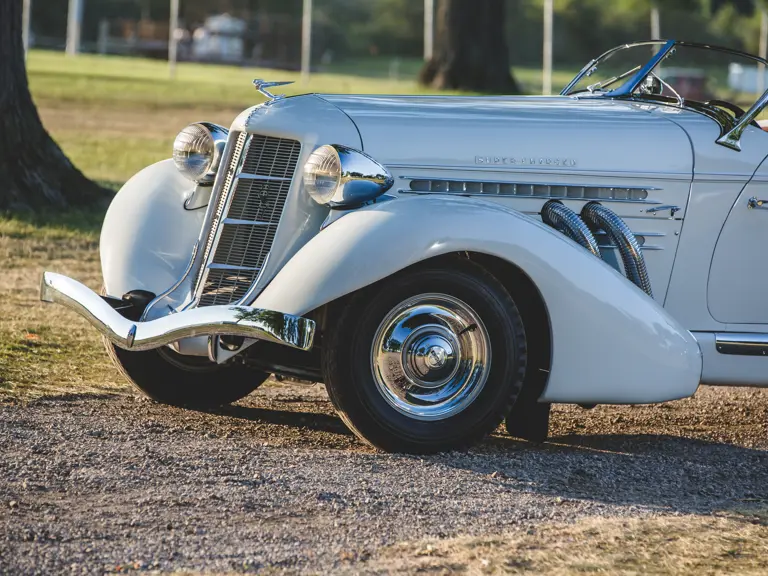
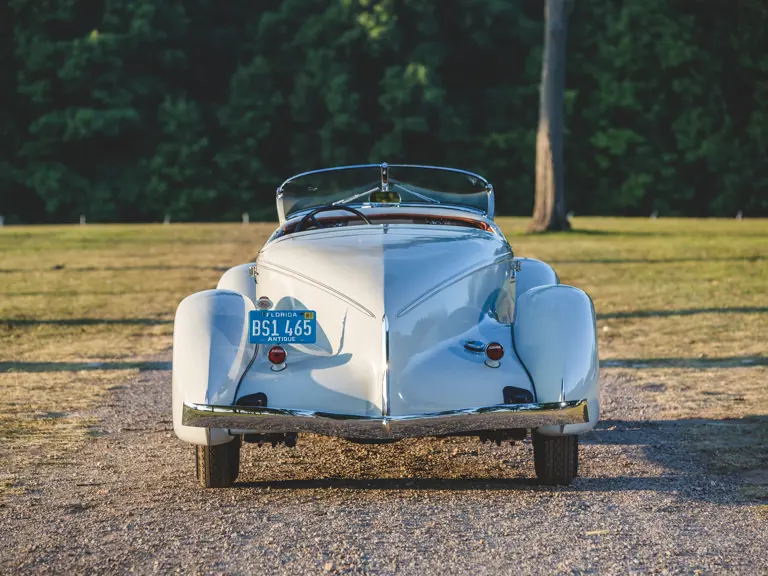

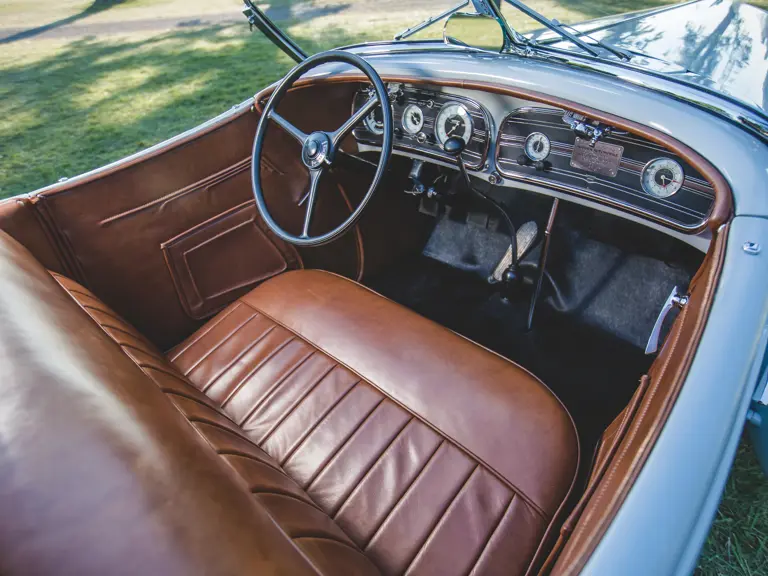
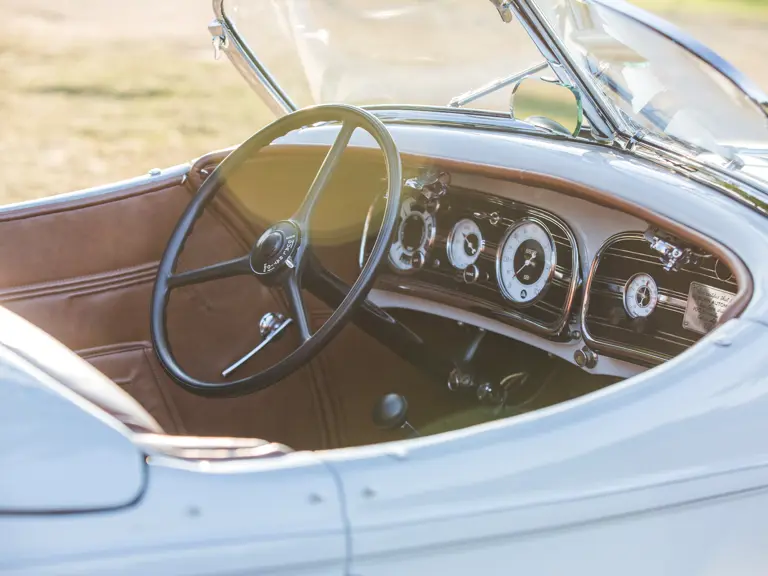
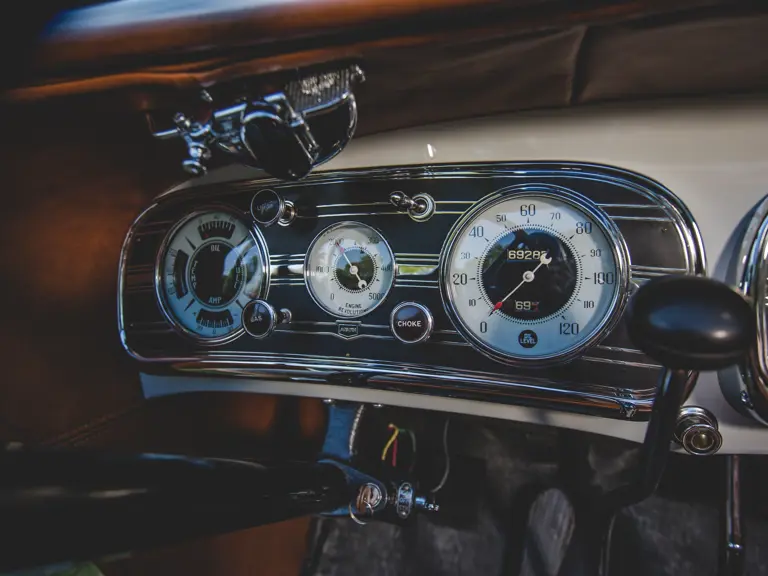

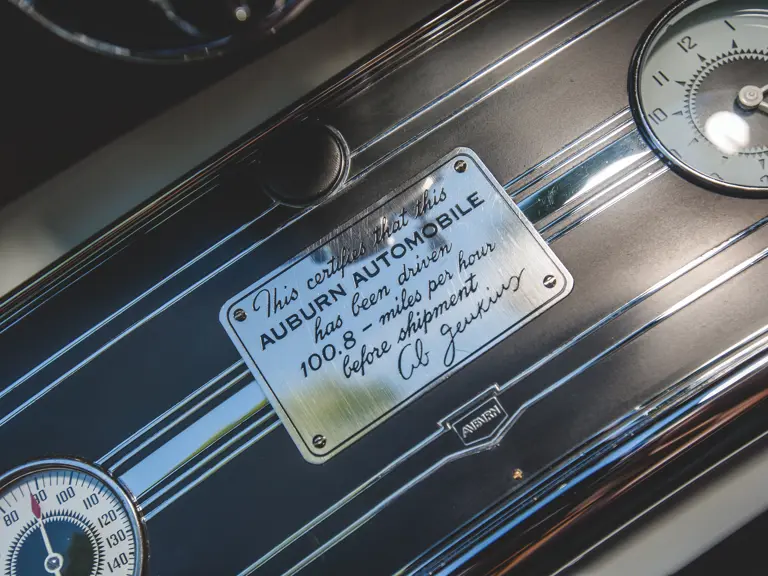

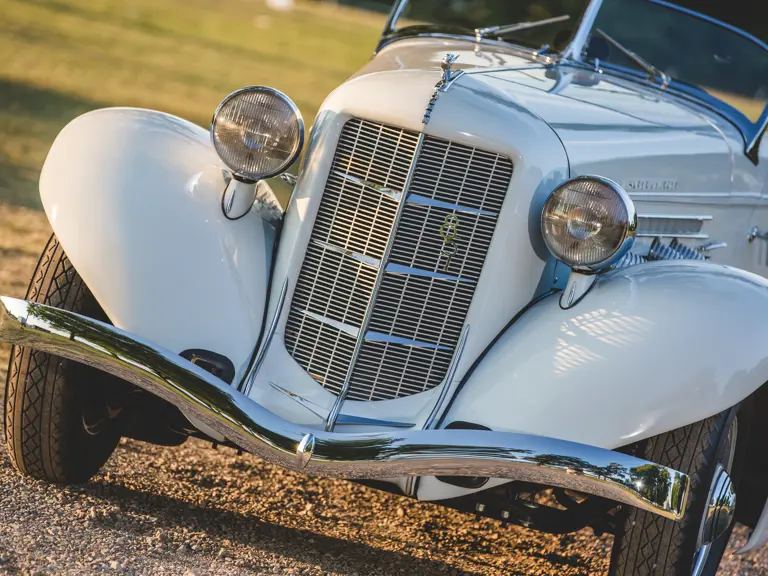
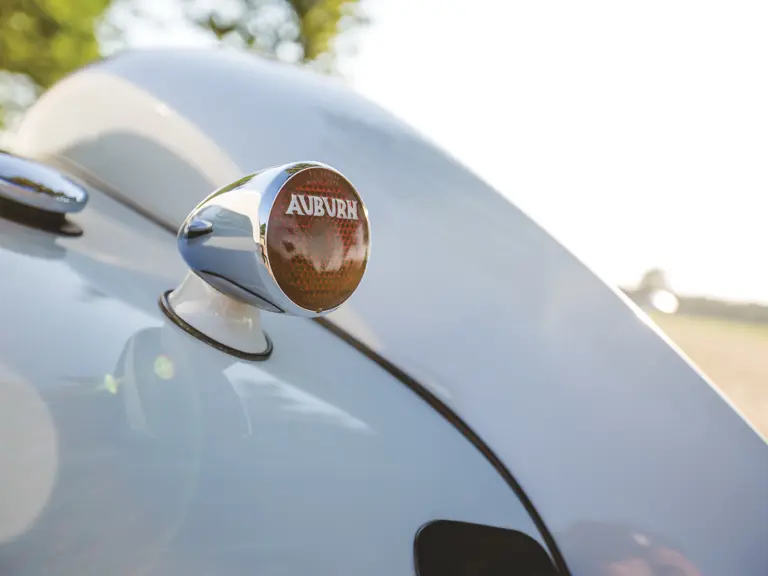
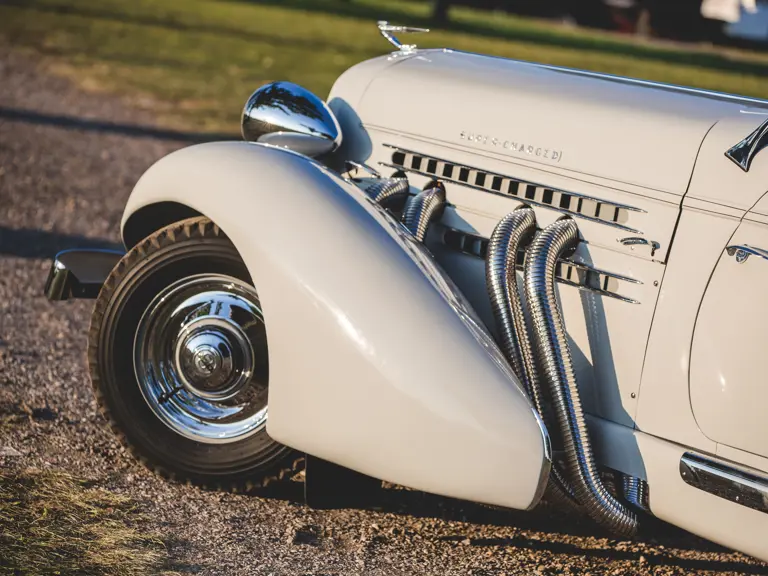
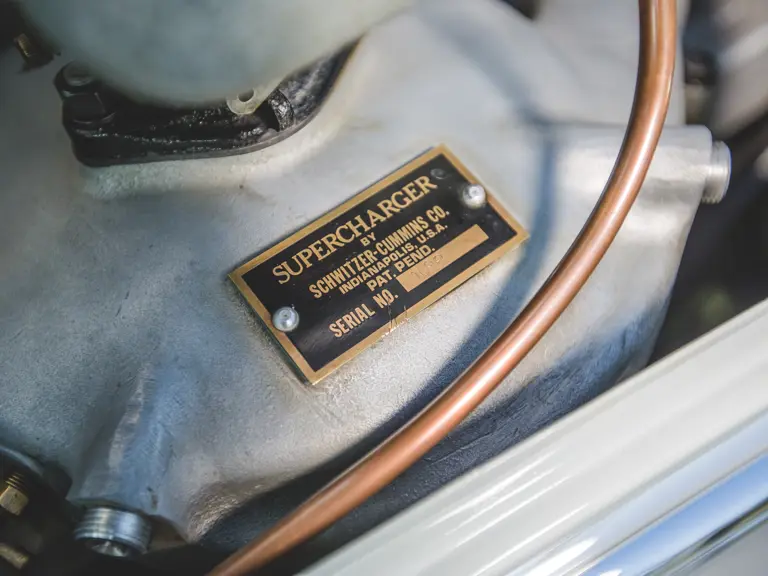



 | Hershey, Pennsylvania
| Hershey, Pennsylvania

